Inventions
Alternate Accelerator
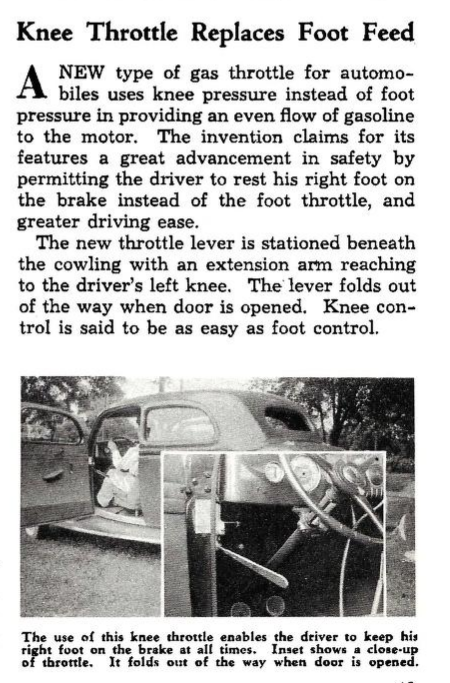
Is one's knee action as forceful, subtle and easy to control as foot action?
Source.
Posted By: Paul - Thu Jun 03, 2021 -
Comments (5)
Category: Death, Inventions, 1930s, Cars
Urine-Collecting Shoe
Problem: you're out in public and really need to go to the bathroom, but there are no toilets around.Solution: the urine-collecting shoe, patented by Ran Rahimzada in 2008.
As described in his patent:
According to the present invention, a new shoe includes a container to store a person's urine. The person may use a standard catheter, which is connected to the container in the shoe.
This is an unobtrusive device, there is no bag attached to one's foot, etc. The device may be used discreetly, without attracting undue attention.

Posted By: Alex - Sun May 30, 2021 -
Comments (1)
Category: Inventions, Patents, Body Fluids, Shoes
Field Umbrella
Patent No. 2,320,848 was granted to Hollie Lee Byars of Parrish, Alabama for an umbrella designed to protect people stooped over. She imagined it would be useful for field workers. Although anyone who spent a lot of time hunched over could benefit.There have been times when I've been weeding my yard that I could have used something like this.

Posted By: Alex - Fri May 21, 2021 -
Comments (3)
Category: Inventions, Patents, 1940s, Weather
Seleno, the Electric Dog
Read the amazing story of cyber-pup here!ADDENDUM: the link is down as of mid-day May 20, but since the site is a longstanding page, I assume the outage is temporary and am leaving the link in place.
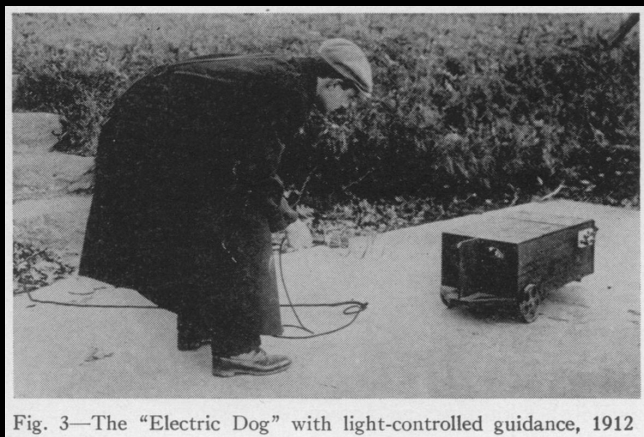
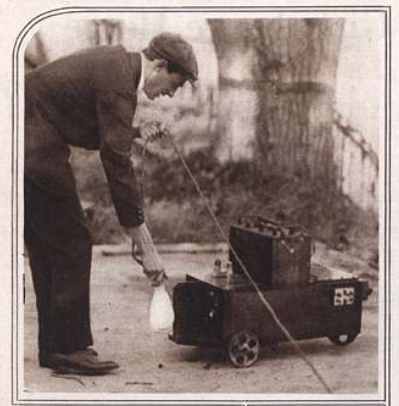
Posted By: Paul - Thu May 20, 2021 -
Comments (1)
Category: Inventions, Robots, 1910s
The Inventions of Russell Oakes
An article here.
Posted By: Paul - Mon May 17, 2021 -
Comments (0)
Category: Humor, Inventions, Rube Goldberg Devices, 1940s
Animating Plants
Many people talk to their plants, but the plants don't talk back. However, a new invention allows the plants not to talk back, but at least to communicate, by moving. For instance, you could ask a plant if it needed to be watered, and the plant would shake up and down to indicate 'yes'.From the patent granted to Richard J. Maddocks et al:
The invention can provide an opportunity for retailers, distributors or gift givers to customize the behavior and content of the plant's behavior.
The present invention can provide a technique for the plant through its behavior to communicate its physiological needs for irrigation, light, fertilizer etc.


Posted By: Alex - Sun May 09, 2021 -
Comments (2)
Category: Communications, Inventions, Patents, Nature, Technology
A Horn for Airplanes
Invented by Charles Adler, Jr. of Baltimore and granted a patent in 1947.I imagine the last thing you'd want to hear as your flight is cruising at 30,000 feet is the pilot suddenly honking the horn.
Though, of course, the horn was intended for small planes, not passenger jets.
Adler himself used it to nag his wife by flying low over his house and honking the horn so that she'd know to start preparing his dinner.


Massillon Evening Independent - Aug 1, 1946
Posted By: Alex - Sun Apr 25, 2021 -
Comments (3)
Category: Inventions, Patents, Air Travel and Airlines, 1940s
The Ettl Enlarging Machine
I would love to see a picture of this gadget, but cannot find one online. I assume all such work today is done easily on computers.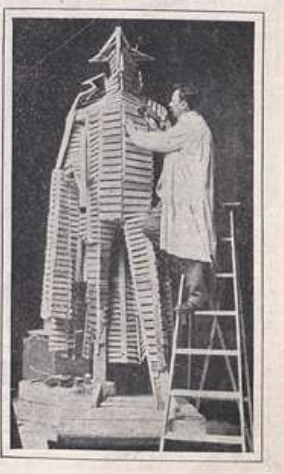
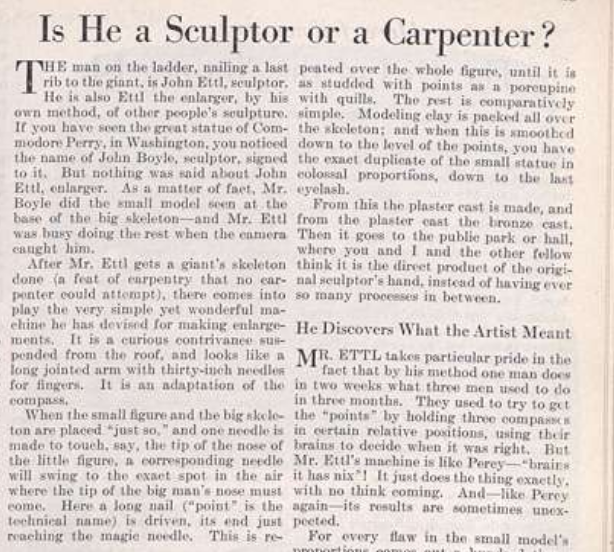
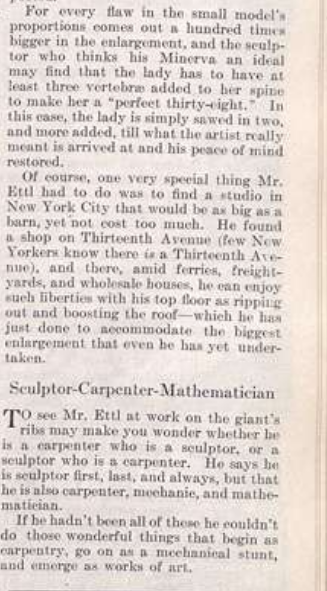
Source.
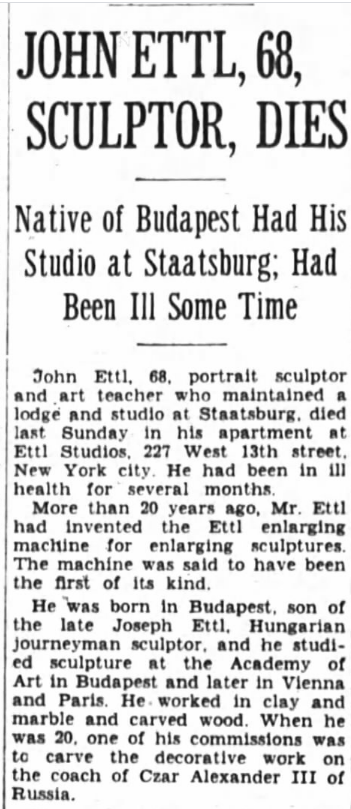
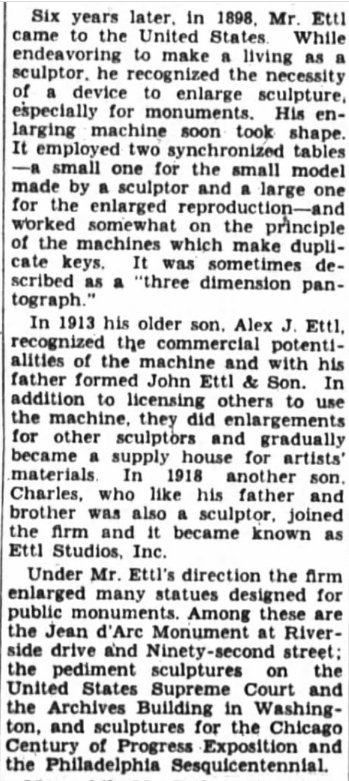
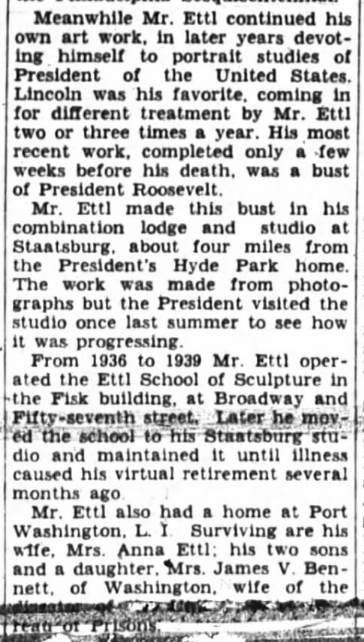
Posted By: Paul - Thu Apr 22, 2021 -
Comments (3)
Category: Art, Statues and Monuments, Inventions, 1910s
Cigarette lighter that gives the finger
In 1942, George Horther was granted a patent for what he called an "electric resistance lighter". From what I can gather, lifting the finger activated the lighter. He had received a separate design patent in 1940 for the invention's appearance.
Curiously, in neither patent did Horther ever refer to the significance of the gesture his invention is making, even though that's pretty much the entire point of it.
I imagine he must have intended to sell this as a gag gift, but I can't find any evidence that he ever did manage to market it.

Posted By: Alex - Sun Apr 18, 2021 -
Comments (0)
Category: Inventions, Patents, Smoking and Tobacco, 1940s
Reuben Lindstrom’s Wind Driven Vehicle
In 1940, Reuben Lindstrom was granted a patent for a "wind driven vehicle". It was a toy made out of tin cans. It resembled a model train, and the wind could make it go by itself. In his patent, Lindstrom explained that he deliberately avoided using a sail to propel the toy.Instead, he had shaped the wheels "to constitute wind responsive impeller blades".

Digging more deeply into the history of this patent, it turns out that Lindstrom was quite a character. For a start, he never cut his hair because, so he said, whenever he did he got heart trouble. In America, in the 1940s, this was unusual enough that it made the news.

Warren Times Mirror - June 28, 1949
He was a regular fixture around Wisconsin Rapids. A 2001 article in the Wisconsin Rapids Daily Tribune called him "our most unforgettable character."
In addition to his wind-driven toy train, he had built a kind of motorized bicycle, described as a "weird contraption of bicycle wheel, one cylinder gas motor, pulley, levers, scooter and miscellany." He used this to get around on roads and railroad lines.
He basically lived as a street person/free spirit, always carrying around "a picture of a woman with a large snake wrapped around her neck." Some people referred to him as the "inventor hobo".
One of the quotations attributed to him: "Fashion is the main religion of this world. If you are different, they think you are nuts. Most people stay away from me because they think I'm a religious fanatic. The girls also stay away from me."
Also: "Dirt's natural and it keeps human diseases from penetrating the skin and entering my body."
He died in 1988.
There's some more info about him at randyjack.com.

Wisconsin Rapids Daily Tribune - June 9, 2001
Posted By: Alex - Sun Apr 11, 2021 -
Comments (0)
Category: Bums, Hobos, Tramps, Beggars, Panhandlers and Other Streetpeople, Inventions, Patents, Toys, 1940s, Trains

| Who We Are |
|---|
| Alex Boese Alex is the creator and curator of the Museum of Hoaxes. He's also the author of various weird, non-fiction, science-themed books such as Elephants on Acid and Psychedelic Apes. Paul Di Filippo Paul has been paid to put weird ideas into fictional form for over thirty years, in his career as a noted science fiction writer. He has recently begun blogging on many curious topics with three fellow writers at The Inferior 4+1. Contact Us |




